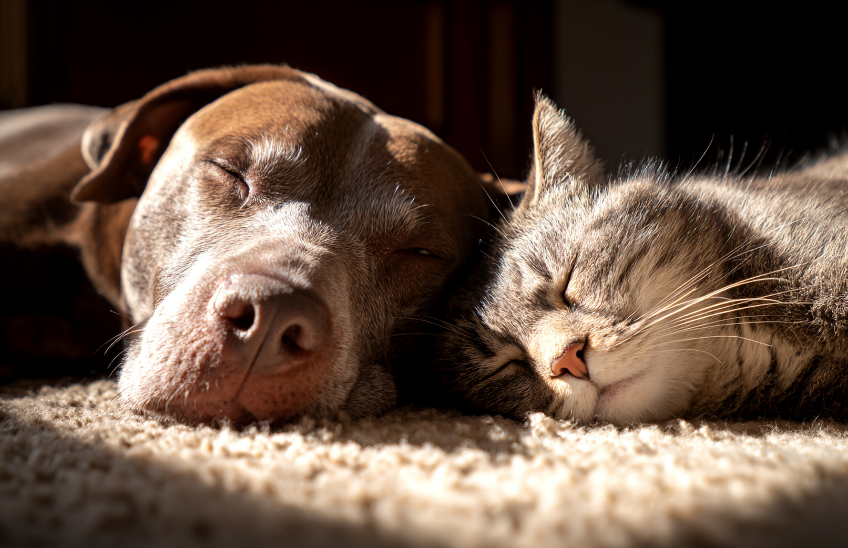
Cold-Weather Care Tips for Dogs and Cats
As temperatures dip and sidewalks shine with frost, our pets feel the change as much as we do—sometimes more. New England winters add layers of challenge for animals, from icy paws to shorter daylight hours and chilly drafts. With a few smart routines and some cozy adjustments, you can keep your furry family members comfortable and safe without giving up the joy of cold-weather walks and window-watching snow.
How cold affects dogs and cats.
Not all pets experience winter the same way. Breed, size, coat type, age, and health play significant roles. A husky may delight in snowy romps, while a short-haired terrier shivers quickly. Senior pets and those with arthritis can be stiff and sore in cold weather, and puppies or kittens lose body heat faster. The key is to observe your animal’s signals: paw lifting, shivering, reluctance to walk, or seeking warmth are signs they’ve had enough. Indoors, keep beds away from drafts and off cold floors. Elevated or insulated beds help, and a blanket or washable throw gives them a warm, familiar spot to settle.
Paw and skin care in winter.
Road salt and ice melt can be tough on paw pads. After walks, wipe paws with a damp cloth to remove salt and chemicals. Check between toes for packed snow or tiny cuts. If your dog tolerates them, booties offer excellent protection; otherwise, use a pet-safe paw balm before heading out. Avoid over-bathing—dry winter air can irritate skin. If you do bathe, rinse thoroughly to remove any lingering de-icers and dry completely before going back outside—layers, leashes, and visibility. Short-haired and small breeds often benefit from a well-fitted coat or sweater.
Choose options that keep the chest and belly warm without restricting movement. As daylight fades early, prioritize visibility. Reflective collars, leashes, or clip-on lights help drivers and neighbors see you on evening walks. Stick to well-lit routes when possible and keep your dog on a leash; snowbanks can hide scents and paths, and even confident dogs can become disoriented in blowing snow.
Hydration and nutrition.
Cold weather can dull the thirst impulse. Make fresh water available at all times and check outdoor bowls frequently to ensure they aren’t frozen. For primarily outdoor pets, consider heated water bowls. Some animals may need a slight increase in calories if they’re spending more time outdoors, but avoid overfeeding. Monitor body condition and adjust as needed, following your veterinarian’s guidance.
Household hazards are unique to winter.
Antifreeze is a critical hazard—its sweet taste can attract animals, but even small amounts are dangerous. Clean spills immediately and store containers securely. Choose pet-safe ice melt for your property when possible.
Keep space heaters stable and cords out of reach.
If you use a wood or pellet stove, install safety gates to prevent burns and keep the floor clear around hot surfaces. Candles are cozy but should never be left unattended in rooms with curious tails or whiskers.
Outdoor cats and wildlife.
For families with outdoor-access cats, provide a sheltered spot out of the wind, with straw bedding that stays drier than blankets. Check under the hood before starting your car; cats sometimes seek warmth there. If you feed backyard birds, place feeders where cats can’t use shrubs or snowbanks as cover to stalk. A bell on a cat’s collar can reduce wildlife encounters, and reflective gear helps cars see them in driveways and roads at dusk.
Travel and boarding considerations
Holiday trips are common this time of year. If a pet will travel with you, pack a familiar blanket, current ID tags, a photo, and any medications. For boarding or pet sitters, share your pet’s cold-weather routine: coat use, walking routes, and indoor enrichment ideas. Provide clear instructions on heat sources and safety boundaries in your home—what doors should remain closed, where the space heater lives, and which rooms are off-limits.
Enrichment when the weather won’t cooperate.
On days when sidewalks are a skating rink or wind chills are harsh, bring the fun inside. Food puzzles, short training sessions, and scent games tire pets mentally. A few five-minute “find it” games using treats hidden around a room can turn a restless afternoon into a satisfying nap. Cats enjoy window perches to watch snowfall and birds, as well as rotating toys to keep their interest fresh.
Identification and microchips.
Winter storms can disorient pets, and doors often open as guests come and go. Double-check collars and tags, and confirm microchip information is up to date. If you know a storm is coming, schedule potty breaks earlier and keep leashes handy so you can stay close to your pet outside.
Community care and courtesy.
Sidewalk courtesy goes a long way on snowy streets. Pick up waste promptly; it’s easier to miss in snow, but it matters for neighbors and waterways. Offer a friendly heads-up to neighbors who use traditional salt if your dog is sensitive to it; many are happy to switch to pet-safe products in shared areas.
Minor adjustments, big comfort.
New England winters ask us to be attentive to our animals’ changing needs. By protecting paws, managing exposure to cold, planning for visibility, and securing household hazards, you can keep pets safe and content all season. A little foresight—and a few extra blankets—turns a long winter into a cozy one for every member of the family.

 Previous Post
Previous Post Next Post
Next Post